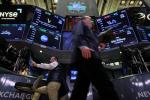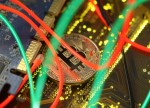
- All Instrument Types
- Indices
- Equities
- ETFs
- Funds
- Commodities
- Currencies
- Crypto
- Bonds
- Certificates
Please try another search

Profit From Share Buyback Boom With These ETFs

President Donald Trump’s biggest tax overhaul in decades has raised the appeal of buyback ETFs. This is especially true as a massive $1.4-trillion tax cut and the repatriation policy have prompted companies from almost every sector to boost their multi-billion dollar share buyback program this year.
Notably, approximately $2.6 trillion in American corporate profits are sitting in overseas bank accounts, about half of that being in cash. The new tax law encourages these companies to bring this cash back home at much reduced rates (read: How Will Tax Reform Affect Buyback and Dividend ETFs?).
U.S. companies have announced $209 billion worth of share buyback since the beginning of this year, according to the latest report from Senate Democrats. A California-based research firm TrimTabs stated that the pace of buybacks had exploded in February to a record $153.7 billion from $59.9 billion in January. Among the largest share repurchases so far, Cisco (NASDAQ:CSCO) has been on the forefront, with its additional $25 billion buyback plan. This was followed by $22.6 billion for Wells Fargo (NYSE:WFC) , $15 billion for Pepsico (NASDAQ:PEP) , $10 billion for Abbvie (NYSE:ABBV) and $10 billion for Amgen (NASDAQ:AMGN) .
Given this optimism, 2018 is expected to be the second-busiest year for buybacks since the bull market began in 2009 as U.S. companies are on track to return a record $1 trillion to their shareholders. An analyst at J.P. Morgan (NYSE:JPM) expects companies on the S&P 500 index to buy back as much as $800 billion in shares of their own stock this year, representing a whopping jump of 51% (i.e. $300 billion) from $530 billion repurchased last year.
About $100 billion of additional buybacks is the result of the tax savings and stronger earnings while $200 billion will be generated from the repatriation bonanza. Another analyst at Goldman Sachs (NYSE:GS) projects that buybacks will rise 23% this year to $650 billion (read: Top-Ranked Sector ETFs & Stocks From Top Industries).
As a result, investors should take advantage of the ongoing boom in share buybacks through the following three ETFs:
SPDR S&P 500 Buyback (NYSE:SPYB) ETF SPYB
This fund focuses on the 101 top companies in the S&P 500 with the highest buyback ratio in the last 12 months. It follows the S&P 500 Buyback Index, charging investors 35 bps in annual fees. From a sector look, financials and consumer discretionary take the largest share with 28.8% and 23.9% allocation, respectively, while information technology and healthcare round off the next spots. The product has a lower AUM of $15.7 million and trades in a paltry volume of around 3,000 shares a day on average (read: Buyback ETF Hits New 52-Week High).
PowerShares Buyback Achievers Portfolio PKW
This ETF tracks the NASDAQ US Buyback Achievers Index, which comprises companies that have repurchased 5% or more of their common stock in the trailing 12 months. It holds 131 stocks in its basket and charges a higher annual fee of 63 bps. Here also, financials and consumer discretionary are the top two sectors, with at least 29% share each, closely followed by consumer staples (15.3%). PKW is the popular fund in the buyback space, managing an asset base of nearly $1.4 billion and trading in an average daily volume of 67,000 shares.
AdvisorShares Wilshire Buyback ETF TTFS
This is an actively managed fund that seeks to generate long-term capital appreciation by investing in stocks with liquidity and fundamental characteristics that are historically associated with superior long-term performance. This approach results in a basket of 101 securities with financials and consumer discretionary as the top two sectors accounting for 19% of assets each. This was followed by industrials (18%), information technology (13%) and healthcare (13%). The product has amassed $113.7 million in its asset base while sees low volume of nearly 6,000 shares a day. The fund charges 90 bps in annual fees.
iShares U.S. Dividend and Buyback ETF DIVB
This fund offers exposure to a broad basket of 379 U.S. companies that return capital to shareholders by paying dividends or buying back their stock. Information technology, financials, consumer discretionary, health care and industrials are the top five sectors with double-digit exposure each. The ETF has newly debuted in the space and accumulated $6.5 million within three months. It trades in a paltry volume of under 7,000 shares a day on average and charges 25 bps in annual fees (read: What Makes iShares' Dividend and Buyback ETF Launch Timely?).
Want key ETF info delivered straight to your inbox?
Zacks’ free Fund Newsletter will brief you on top news and analysis, as well as top-performing ETFs, each week. Get it free >>
Cisco Systems, Inc. (CSCO): Free Stock Analysis Report
JPMorgan Chase & Co. (JPM): Free Stock Analysis Report
Wells Fargo & Company (WFC): Free Stock Analysis Report
AbbVie Inc. (ABBV): Free Stock Analysis Report
Pepsico, Inc. (PEP): Free Stock Analysis Report
The Goldman Sachs Group, Inc. (GS): Free Stock Analysis Report
ADVSR-WIL BY BK (TTFS): ETF Research Reports
PWRSH-BYBK ACHV (PKW): ETF Research Reports
SPDR-S&P500 BB (SPYB): ETF Research Reports
Amgen Inc. (AMGN): Free Stock Analysis Report
ISHR-US DIV BB (DIVB): ETF Research Reports
Original post
Zacks Investment Research
Related Articles

Nvidia’s earnings beat didn’t erase investor concerns over slowing growth. Soft Q1 guidance and valuation worries may limit the stock’s upside. Weak network and gaming sales...

Shares of Etsy (NASDAQ:ETSY) are down approximately 7% since the company reported earnings on February 19. Concerns over slowing growth are overriding revenue and earnings that...

Warren Buffett and Berkshire Hathaway (NYSE:BRKa) always make headlines in February when the firm holds its annual meeting. Among the many takeaways is what the company has been...
Are you sure you want to block %USER_NAME%?
By doing so, you and %USER_NAME% will not be able to see any of each other's Investing.com's posts.
%USER_NAME% was successfully added to your Block List
Since you’ve just unblocked this person, you must wait 48 hours before renewing the block.
I feel that this comment is:
Thank You!
Your report has been sent to our moderators for review





Add a Comment
We encourage you to use comments to engage with other users, share your perspective and ask questions of authors and each other. However, in order to maintain the high level of discourse we’ve all come to value and expect, please keep the following criteria in mind:
Enrich the conversation, don’t trash it.
Stay focused and on track. Only post material that’s relevant to the topic being discussed.
Be respectful. Even negative opinions can be framed positively and diplomatically. Avoid profanity, slander or personal attacks directed at an author or another user. Racism, sexism and other forms of discrimination will not be tolerated.
Perpetrators of spam or abuse will be deleted from the site and prohibited from future registration at Investing.com’s discretion.